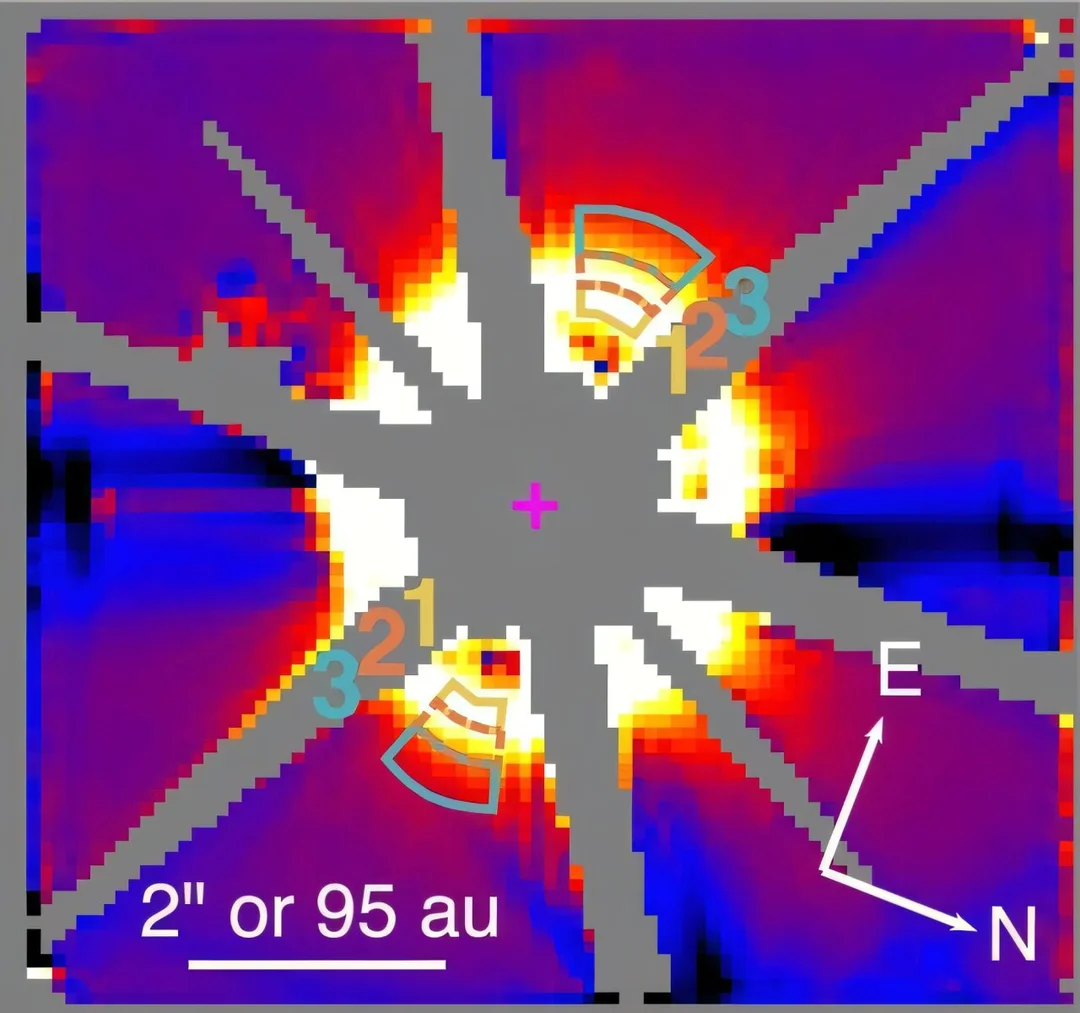
James Webb Telescope Detects Frozen Water Around Distant Star, Mirroring Our Early Solar System
In a groundbreaking discovery, the James Webb Space Telescope (JWST) has detected water ice in a dusty debris ring orbiting a distant, sun-like star, HD 181327. This finding, published in the journal Nature on May 15, not only showcases the remarkable capabilities of the JWST but also provides valuable insights into how life-essential compounds like water are distributed in other planetary systems. Located approximately 155 light-years away in the constellation Telescopium, HD 181327 offers a glimpse into the early stages of our own solar system.

Mirroring the Early Solar System
The star, only 23 million years old, is surrounded by a broad, dusty debris disk filled with icy bodies, representing the building blocks of planets. Christine Chen, a research scientist at Johns Hopkins University, describes it as a “very active system” with frequent collisions generating fine particles of dusty water ice. These particles are “perfectly sized for Webb to detect,” allowing for a detailed mapping of the disk’s composition.
Astronomers leveraged JWST's Near-Infrared Spectrograph (NIRSpec) to analyze the debris disk of HD 181327, which extends approximately 84 AU from the star and has a width of about 25 AU. The team noticed a broad, bowl-shaped dip between 2.7 and 3.4 μm in the disk's reflectance spectrum, consistent with the 3 μm feature of water ice. Additionally, a sharp peak at 3.1 μm was detected, attributed to the Fresnel peak of water ice.
Implications for the Origins of Life
This discovery supports the theory that icy “dirty snowballs” in the outer regions of planetary systems could deliver water to forming rocky planets via high-speed impacts. This process is believed to have played a role in seeding Earth with water. The JWST’s infrared instruments revealed that most of the water ice is concentrated in the outer disk, where temperatures are low enough for it to remain stable. Closer to the star, ice becomes rare due to ultraviolet radiation or because it is locked within larger planetesimals.

A Glimpse into the Past
Scientists noted strong similarities between this disk and the Kuiper Belt in our solar system. The data resembles recent observations of Kuiper Belt objects, emphasizing the value of comparative data in understanding planetary formation. The constant bombardment and icy chaos within the disk set the stage for the slow aggregation of new planets and the potential arrival of life-bearing compounds.
At approximately 13.9%, The water-ice mass fraction at the outer part of the disk around HD 181327 shows a dynamic system with micron-sized icy particles being continuously created and destroyed. Further investigation revealed the presence of iron sulfide and olivine in the disk, indicating the presence of vital elements observed in comet, meteor and protoplanetary samples.
The detection of water ice, iron sulfide and olivine around HD 181327 not only provides a deeper understanding of planet formation, but also opens up a wider pathway into tracing the distribution and movement of water across the cosmos.
What does this discovery tell us about the prevalence of water in young planetary systems? How might this influence the search for life beyond Earth? Share your thoughts in the comments below!